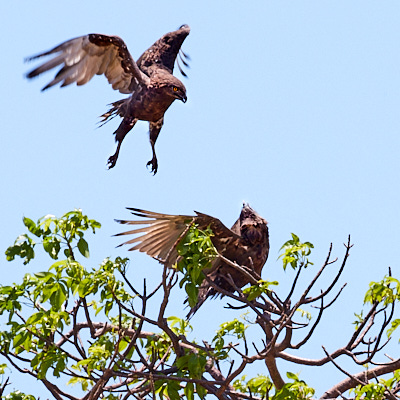BLOG
Bee-Eater mysterious behavior

A strange Bee-Eater behaviour was observed from the deck of our cabin on the banks of a large water source at Marakele National Park in the Waterberg, South Africa
All the mysterious action captured through the lens of my camera.
Whilst sitting on the deck of our cabin,my brother and I noticed a very strange behaviour taking place right in front of us. So I grabbed my camera and started to capture the action. I somehow knew that what we were witnessing was unusual and has not often been seen, nor captured in camera by too many people.

European Bee-eaters usually hunt honeybees and other flying insects. Some have however been observed, on very rare occasions, to dive into the water, in an almost identical manner to king-fishers such as the Pied-Kingfisher and others.
There is not much visual evidence of this activity available so I was lucky to be able to capture some reasonably clear shots of the action. Unfortunately,shooting at distances of 80 - 100 meters away, proved to be quite challenging but with an 800mm lens mounted, I decided to not to miss this rare opportunity.
Experts are not sure of the reason for this strange behaviour. Some birders are of the opinion that the birds may be bathing but after been fortunate enough to observe this very strange behavior for a week, we noticed something that may shed more light on the mystery.
What we saw was incredible
The most interesting observation was that the time of the activity was not always the same each day. Mostly early afternoon but also later in the day or sometimes in the late morning, but ever before 10am though. This seemed to indicate that they were hunting and not bathing.
The birds would come overhead and start chirping cheerfully and diving. Then they would rest in a nearby tree for a short period and then the action would resume. The spot where they were diving changed constantly and was limited to a moving circle of about 3 - 10 meters in diameter.
After emerging from the water, the birds would not shake their wings nor would they prean themselves as would typically be the case if they were bathing. They would either return to the nearby tree or fly back to the orginal high level above the water and come back for some more action.
The target area would move from its original location which seemed to be consistient with bees or insects moving over the water or some other prey near the surface of the water. At the distance that this action took place, we were unfortunately not able to identify what the targets were.
Swallows would usually follow the action flying low above the water with their mouths open




Once the bee-eaters had completed their diving, the swallows would swoop down and take over in the identical spot. They would fly low level, similar to a skimmer, with their mouth wide open just above the water. They too would break the surface with a splash but would not dive as deep into the water as the bee-eaters were doing. This seemed to indicate that they may also have been feeding on insects or tadpoles either close to the surface of the water or just above it. (one of the images of the Swallows above shows a Swallow flying off with what looks like a tadpole in its mouth).
We also noted that the frogs at night were still breeding and croaking, albeit late in the season, so it was likely that there were tadpoles present.
So what did we learn
We had observed two important things that may shed some light on this mystery. Firstly, the bee-eaters did not appear to be bathing but rather showed distinct signs of hunting.
Secondly, the secret may be found in the actions of the swallows that hunted in the identical spot immediately after the bee-eaters had left. From their actions and the images above, it is clear to us that they were most likely hunting, especially as they were flying with their mouths open, taking something from the water and then flying off with what appears to be a tadpole or something similar.
Bee-Eater photo sequence
Below is a sequence of a bee-eater diving into the water. The time from the first shot to the last is exactly 0.4 seconds (shot at a 17fps capture sequence)













